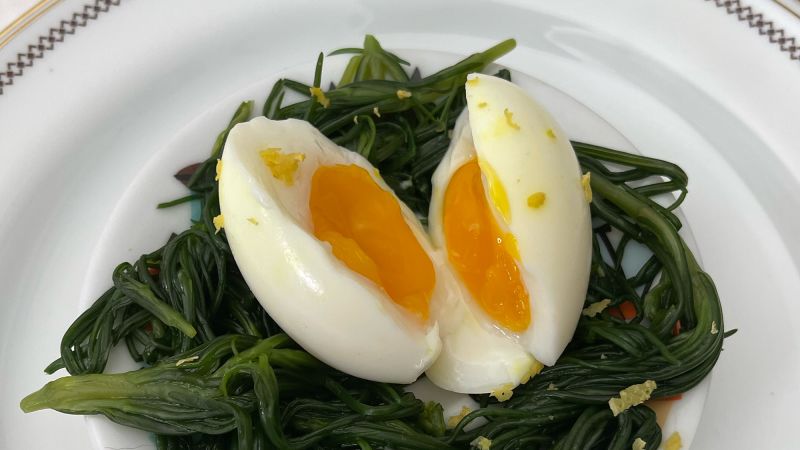The pursuit of the perfectly boiled egg has long been a culinary challenge, one that has intrigued chefs and home cooks alike. Despite many believing they have perfected their egg-boiling techniques, new insights suggest that reaching the ideal texture and flavor may be more scientific than previously thought. As scientists have demonstrated, achieving the perfect boiled egg involves understanding the different thermal properties of its components – specifically, the albumen (egg white) and the yolk.
Recent research published on February 6 in the journal *Communications Engineering* introduces a revolutionary technique called “periodic cooking.” This method alternates cooking the eggs between hot and lukewarm water, enabling the simultaneous cooking of the albumen and yolk without compromising their unique textures. This innovative approach has been found to produce not only the ideal texture and flavor but also superior nutrient retention when compared to traditional methods such as hard-boiling or sous vide preparation.
Micah Siva, a San Francisco-based dietitian and recipe writer, corroborated the scientific underpinnings of this cooking method, stating that cooking is fundamentally a science. Understanding the adjustments required to account for the properties of proteins within the egg can significantly enhance the final product’s quality, as she emphasized the importance of balancing temperature with these specific properties.
For those interested in experimenting with this cooking technique, Dr. Ernesto Di Maio, the study’s lead author, revealed that the periodic cooking experiment was conducted in a home kitchen using straightforward equipment. The method requires only 32 minutes of preparation, making it accessible to anyone willing to try out this scientific approach.
The researchers employed mathematical models and simulation tools to predict heat transfer through the egg, which facilitated the identification of ideal cooking conditions. By analyzing variables such as water temperature and density, the team established optimal intervals for alternating the eggs between hot and lukewarm water during the cooking period. This method was meticulously tested by placing a food thermometer in the cooking pot to ensure consistent water temperature throughout.
The experiment involved cooking an impressive 160 eggs divided into groups of 40, each subjected to various cooking methods: hard-boiling, soft-boiling, sous vide, and the groundbreaking periodic cooking technique. The egg samples prepared through traditional methods served as control groups, providing a baseline for comparison regarding internal temperature profiles as well as texture and nutrient retention.
While traditional methods see a consistent increase in internal egg temperatures, the periodic cooking method uniquely maintains a steady yolk temperature of 67 C (152.6 F), while allowing the albumen to fluctuate between 87 C and 100 C (188.6 F to 212 F) in hot water and 30 C to 55 C (86 F to 131 F) in lukewarm water. This consistent temperature management leads to the ideal textures for both the egg white and yolk.
However, the process has been met with mixed opinions. Siva admitted that while fascinating, the commitment of 32 minutes for egg preparation may not appeal to most people, who are often looking for quicker cooking solutions. Despite this, the researchers conducted thorough analyses, including texture and sensory assessments, to evaluate various attributes of the eggs, such as color, consistency, and taste.
The texture profile of the periodically cooked eggs closely resembled soft-boiled eggs for the albumen and sous vide-cooked eggs for the yolk, creating a delightful contrast that many found appealing. Di Maio described the yolk’s jelly-like consistency and the well-set nature of the albumen, which managed to avoid being overly firm, showcasing the advantages of periodic cooking.
Nevertheless, those looking to recreate this technique should exercise caution with raw or undercooked eggs due to potential foodborne illness risks, especially in individuals with compromised immune systems.
The study also examined nutritional content, highlighting that periodic cooking preserved higher levels of polyphenols – compounds known for their anti-inflammatory and antioxidant properties that may play a role in disease prevention. Although the changes in nutrient composition are minimal, eggs still offer a robust source of protein and healthy fats across all cooking methods. The research ultimately enriches the understanding of egg cooking, providing a path for enthusiasts to achieve superior results.












